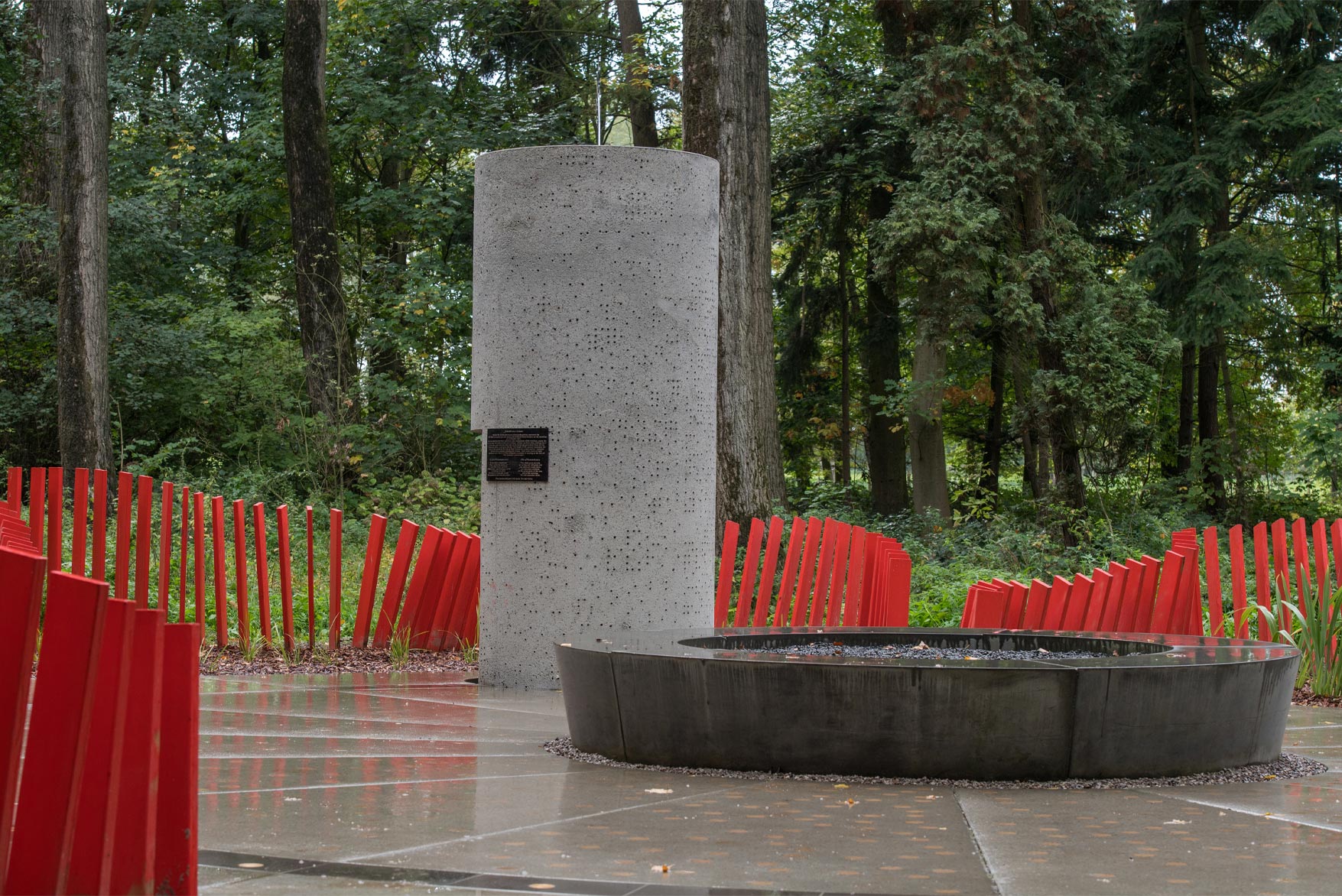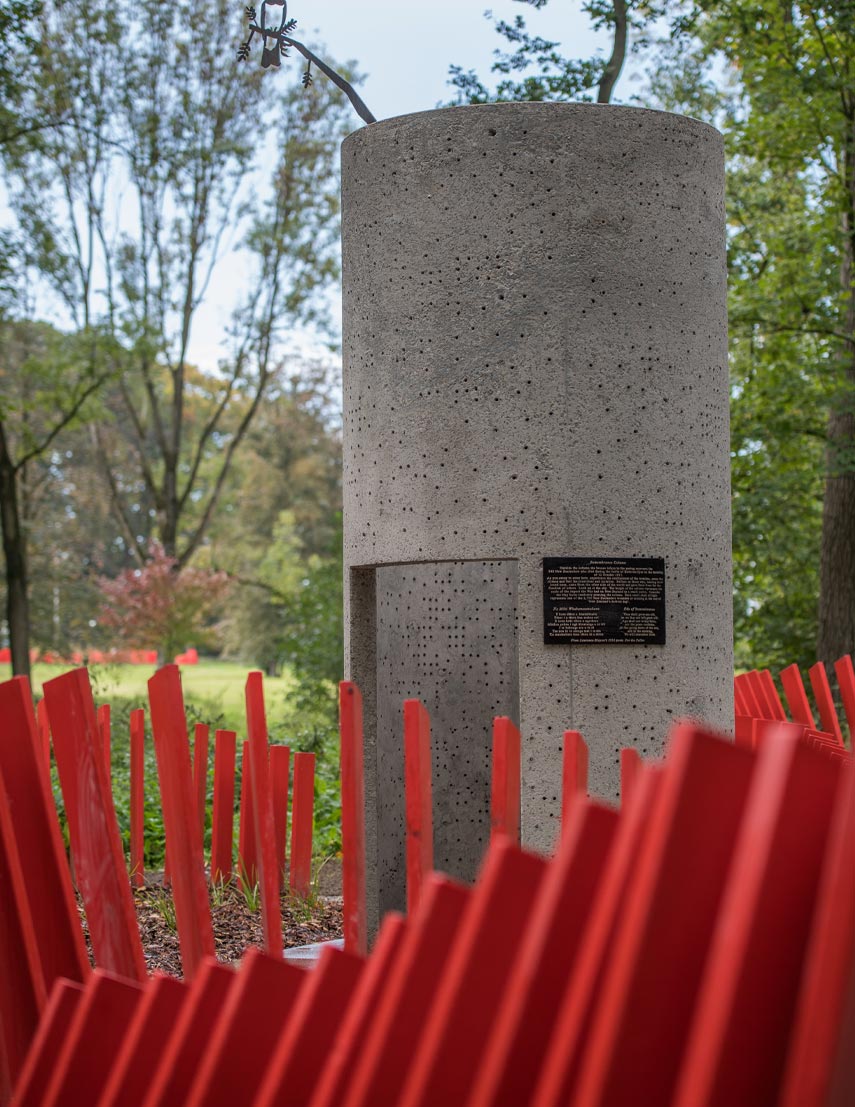The design expresses a uniquely New Zealand aesthetic in the Passchendaele location. An essential element was to bring as many elements as possible from New Zealand – particularly the aggregate and the stone, as those truly are ‘of the earth’. This New Zealand Memorial Garden, quite literally, is a part of Aotearoa brought to Passchendaele.
The museum’s design brief required that each memorial respond to three themes: remembrance through plant symbolism, remembrance through visual art and remembrance through literature. These themes are treated as discrete design elements within the individual petals and throughout the whole poppy installation, as a way to unify the space as a single installation, exhibit and experience.
Remembrance through planting comprises a flax swathe, and a planting curve. Iconic plants of New Zealand – flax, rātā and mānuka – were chosen for the design.
Remembrance through visual art takes the form of a concrete memory column. The scale of the door requires visitors to bend low to enter, echoing the physical confinement of the battlefield trenches. The size of the opening and internal diameter has been designed to allow a wheelchair to enter and turn around. The column is pierced by 2,700 pinholes, in a random array, representing the number of the fallen – dead, wounded and missing – at the end of the first day. Underfoot, 846 bronze inlays symbolize the New Zealand soldiers killed within the first hours of the battle.
Addressing remembrance through literature, the evocative lyrics of ‘Poppy and Pohutukawa’ are emblazoned in bronze within an arc of Timaru basalt. While the words effectively encapsulate the New Zealand aspect within the overall theme of the memorial gardens, the familiar text will resonate strongly with Kiwis who visit this emotional place.





